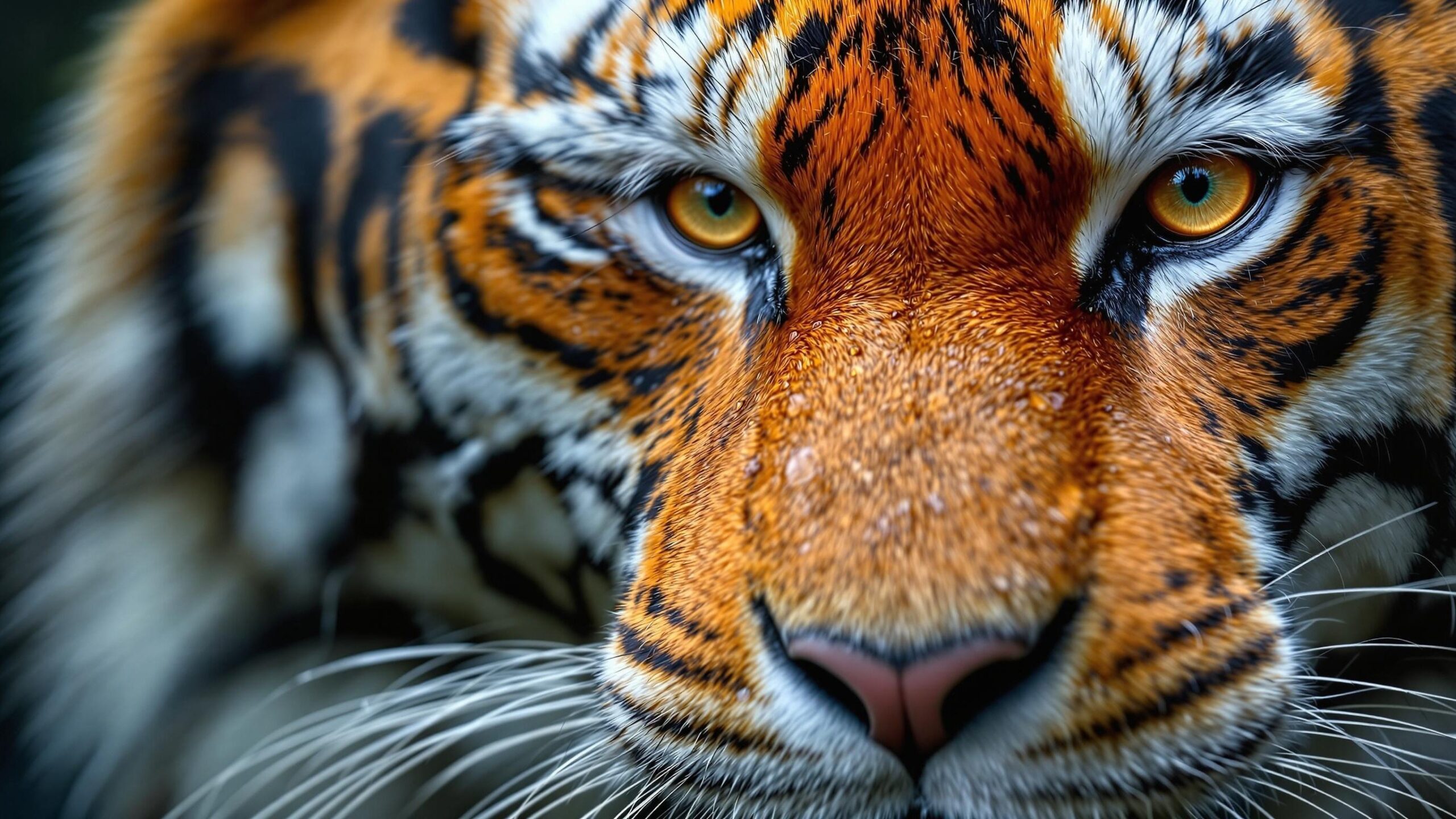The South China Tiger: Rediscovering the Lost King of the Bamboo Forests
Once described as the most evolutionary distinct of all tiger subspecies, the South China tiger (Panthera tigris amoyensis) roamed the temperate forests and rolling hills of southern China, a creature of both myth and majesty. Known for its compact form, bold coloring, and legendary ferocity, this tiger was once a symbol of imperial power and wild abundance in Chinese culture. Today, however, the South China tiger is known more for its near-total disappearance from the wild—yet its story is not one of extinction, but of extraordinary potential for revival. With a blend of mystery, science, and hope, the South China tiger represents the edge of a precipice between what has been lost and what can still be restored.
A Tiger of Its Own: Introducing Panthera tigris amoyensis
The South China tiger is a unique subspecies of tiger, scientifically classified as Panthera tigris amoyensis. Sometimes referred to as the “Chinese tiger” or the “Amoy tiger”—the latter named after the port city now known as Xiamen—this tiger is distinct in both appearance and behavior from its larger cousins in Siberia or India. Smaller than most tiger subspecies, the South China tiger is lean, muscular, and highly adapted to the subtropical forests and mountainous terrain of southern China. Adult males typically weigh between 287 to 386 pounds (130 to 175 kilograms), while females are smaller, ranging from 220 to 254 pounds (100 to 115 kilograms). Their body length averages around 7.5 to 8.5 feet (including the tail), making them more agile and swift compared to bulkier tiger subspecies.
One of the most visually striking features of the South China tiger is its bold coat—rich golden-orange with broad, widely spaced black stripes and a comparatively paler belly. The face is expressive, with high cheekbones and piercing amber eyes that seem to glow with intelligence and intensity. These characteristics made it not only an apex predator in its ecosystem, but also a deeply revered animal in Chinese folklore and symbolism, often associated with courage, power, and military prowess.
The Historical Range: From the Yangtze to the Bamboo Hills
Historically, the South China tiger roamed freely across a vast territory that included the provinces of Fujian, Jiangxi, Hunan, Guangdong, and Zhejiang, extending into the hilly and forested landscapes of central and southern China. These regions were characterized by dense bamboo thickets, deciduous woodlands, and mountainous terrain—perfect cover for a stealthy and solitary predator.
The subtropical climate of these areas allowed the tiger to thrive, hunting wild pigs, muntjac deer, porcupines, and other medium-sized prey. Unlike tigers of the colder northern climates, the South China tiger did not need to grow especially thick fur, and its sleeker physique made it ideal for ambushing prey through dense vegetation. Despite its adaptability, the tiger was never widely spread in massive numbers. It was always somewhat elusive, relying on seclusion and the natural richness of the forests to maintain its role at the top of the food chain.
Ecology and Behavior: Solitary Shadows in the Forest
Like all tiger subspecies, the South China tiger is a solitary animal. Each tiger carves out a territory based on food availability and the presence of rivals. Males generally claim larger ranges, which may overlap with the territories of multiple females, while female territories are more compact and carefully guarded, especially when cubs are present. The South China tiger is a crepuscular hunter, preferring to stalk its prey during the early morning or late evening hours. It relies on silent movements, camouflaged coat patterns, and explosive strength to close in on unsuspecting prey. A single powerful pounce is usually enough to bring down animals as large as deer or wild boar.
Tigers communicate through scent markings, scratch marks on trees, low-frequency vocalizations, and roars. Mating can occur at any time of year, and after a gestation period of about 103 days, a female typically gives birth to a litter of two to four cubs. The young remain dependent on their mother for more than a year, learning the art of hunting before eventually setting out to find territories of their own. Despite its ferocious reputation, the South China tiger is an intelligent and often cautious creature, typically avoiding human interaction unless provoked or desperate.

A Disappearing Legend: Decline and Near-Extinction
The South China tiger’s fall from dominance to near-extinction is one of the most tragic and cautionary tales in conservation history. In the 1950s, it was estimated that more than 4,000 South China tigers roamed wild across southern China. However, the subspecies became the unfortunate victim of policy decisions and changing cultural landscapes. During the Great Leap Forward and subsequent years of upheaval in the mid-20th century, the South China tiger was declared a pest and targeted in government-sponsored eradication campaigns. Perceived as a threat to rural communities and livestock, tigers were systematically hunted, and their habitats were cleared for agriculture and development.
By the late 1970s, the population had plummeted. China officially banned tiger hunting in 1979, but by then it was already too late. Habitat fragmentation, poaching, and prey depletion had devastated the subspecies. By the early 1990s, sightings in the wild became exceedingly rare. The last confirmed wild sighting was reported in the early 1990s in Guangdong Province, though unverified reports have surfaced sporadically since. Today, the South China tiger is considered “functionally extinct” in the wild—meaning there are no known surviving wild populations, and any future presence in nature would depend on reintroduction from captive stock.
Conservation in Captivity: A Breeding Program with a Purpose
Despite the bleak outlook in the wild, the South China tiger still survives—barely—in captivity. A small but dedicated network of breeding centers in China, most notably the Suzhou South China Tiger Breeding Research Base, has kept the genetic flame alive. As of recent counts, fewer than 200 South China tigers are believed to exist in captivity, all descended from a founding group of only six individuals captured in the 1950s. This limited genetic pool presents a major challenge. Inbreeding, health complications, and lack of genetic diversity threaten the long-term viability of the subspecies. To combat this, conservationists have implemented rigorous genetic monitoring and planned breeding to maximize variation and reduce inherited disorders.
One of the most intriguing efforts has been the South China Tiger Rewilding Project, launched by Save China’s Tigers, a conservation group that partnered with wildlife experts to introduce captive-born South China tigers into a semi-wild reserve in South Africa. The idea was to give the tigers a chance to regain hunting skills in a controlled but natural environment before attempting reintroduction into China. The South African experiment met with both praise and skepticism, but it succeeded in proving that captive South China tigers could learn to survive, hunt, and reproduce in semi-wild conditions. Whether these skills will translate back into China’s ecological and political landscape remains to be seen.
Cultural Significance: The Tiger in Chinese Tradition
In Chinese culture, the tiger is one of the most iconic and spiritually potent animals. It is one of the 12 signs of the Chinese zodiac and has long been a symbol of bravery, protection, and authority. Warriors painted tigers on shields and helmets, and entire dynasties drew strength from the metaphor of the tiger’s raw power.
The South China tiger, in particular, holds an even deeper historical resonance. Often called the “Chinese Tiger” in literature and folklore, it has been featured in ancient scrolls, carved on stone tablets, and embedded in temple architecture. Some Taoist traditions believed the tiger to be a spiritual guardian of the west, counterbalancing the dragon, which ruled the east. This deep-rooted reverence makes the tiger’s near-disappearance not just a biological tragedy, but a cultural one as well.

The Hope of Rewilding: Can the South China Tiger Return?
Reintroducing a species to the wild is a complex and fraught undertaking, and even more so when that species hasn’t been seen in its native habitat for decades. But despite enormous hurdles, the possibility of rewilding the South China tiger still captures the imagination of conservationists and scientists. Several provinces in southern China—such as Jiangxi and Hunan—have been studied as potential sites for reintroduction. These areas have experienced forest regrowth and ecosystem recovery, offering pockets of potential tiger territory. However, challenges remain: local communities, land usage rights, the need for ecological corridors, and above all, the reestablishment of stable prey populations.
For a rewilding effort to succeed, it would require a combination of community support, ecological readiness, and long-term commitment. But small steps are being taken. Habitat restoration projects, eco-tourism initiatives, and ongoing breeding programs continue to lay the groundwork for what could one day be the triumphant return of Panthera tigris amoyensis to the forests it once ruled.
Why the South China Tiger Still Matters
Some may ask: Why pour effort into saving a tiger that hasn’t been seen in the wild for over 30 years? The answer lies not just in biodiversity, but in identity, history, and environmental stewardship. The South China tiger is a living relic—a direct descendant of the oldest lineage of tigers on Earth. Genetically and evolutionarily, it holds clues to the tiger’s past, and protecting it may inform broader conservation for all tiger subspecies. Its extinction would not just be the loss of a tiger—it would be the erasure of a unique branch of natural history.
Moreover, the attempt to save the South China tiger is a mirror reflecting our relationship with the environment. In choosing to protect what remains, we make a statement about values, resilience, and responsibility. Efforts to conserve this tiger also benefit broader ecosystems, from bamboo groves to wild deer herds to river corridors. Finally, this tiger is more than a conservation issue—it is part of China’s soul. If it can walk free again in the land of its ancestors, it would be a symbol not only of ecological healing but of cultural rebirth.
Not Extinct—Just Waiting
The South China tiger stands on the edge of a remarkable story—not of extinction, but of endurance. Though the forests of southern China no longer echo with its roar, the spirit of the tiger is not lost. In breeding centers, in conservation strategies, and in the dreams of a generation determined to make things right, the South China tiger waits.
Its future may not be certain, but it is far from hopeless. As long as people care, and act, and believe in wild things, there is a path forward. One day, perhaps, the bamboo forests will stir again with the silent footsteps of China’s lost tiger—returned not as a ghost, but as a guardian reborn.

